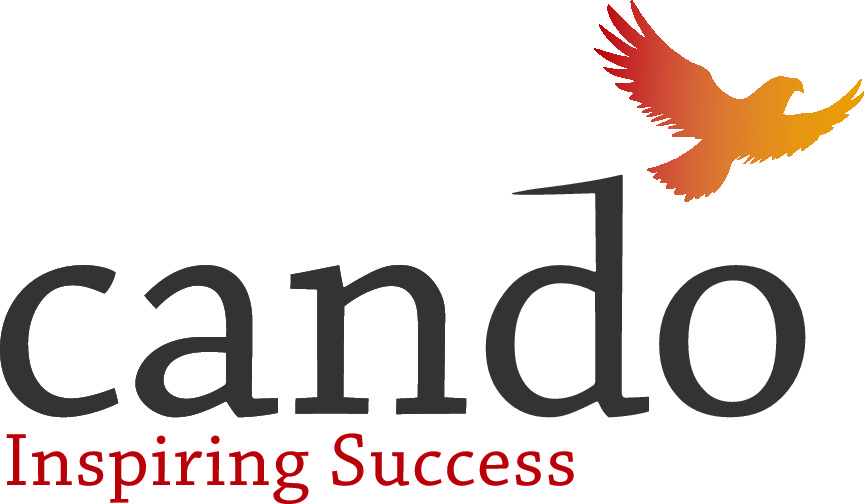Using Two-Eyed Seeing to Codevelop First Nations Housing Policies with Canada
DOI:
https://doi.org/10.29173/jaed491Keywords:
First Nations, Housing, Economic self-determination, Co-development, Two-Eyed SeeingAbstract
This study explores the use of Two-Eyed Seeing to guide the codevelopment of housing policies between First Nations and Canada, fostering meaningful collaboration and advancing self-determination. It examines historical contexts, challenges, and benefits, using interviews with Kitigan Zibi Anishinabeg, Quebec, and Potlotek, Nova Scotia, as case studies. Key principles for effective policy codevelopment include meaningful engagement, respectful dialogue, shared decision-making, and the recognition of Indigenous rights and sovereignty. The paper contributes to ongoing discourse on Indigenous governance and equitable partnerships
Downloads
References
Bartlett, C., Marshall, M., & Marshall, A. (2012). Two-Eyed Seeing and other lessons learned within a co-learning journey of bringing together Indigenous and mainstream knowledges and ways of knowing. Journal of Environmental Studies and Sciences, 2(4), 331-340. https://doi. org/10.1007/s13412-012-0086-8
Battiste, J. (Ed.). (2010). Honouring 400 years Kepmite’trnneg. Mi’kmaq Grand Council, Eskasoni First Nation & the Nova Scotia Tripartite Forum on Education. Grand Council of Mi’kmaq.
Battiste, M. (2016). Living treaties. Cape Breton University Press.
Borrows, J., Chartrand, L. N., Fitzgerald, O. E., & Schwartz, R. (Eds.). (2019). Braiding legal orders: Implementing the United Nations Declaration on the Rights of Indigenous Peoples. Centre for International Governance Innovation.
Canada Mortgage and Housing Corporation. (2018). On-Reserve Non-Profit Housing Program (Section 95). https://www.cmhc-schl.gc.ca/professionals/project-funding-and-mortgage-financing/funding-programs/all-funding-programs/on-reserve-non-profit-housing-program-section-95
Colbourne, R., Moroz, P., Hall, C., Lendsay, K., & Anderson, R. B. (2019). Indigenous works and Two-Eyed Seeing: Mapping the case for Indigenous-led research. Qualitative Research in Organizations and Management: An International Journal, 15(1), 68-86.https://doi.org/10.1108/QROM-04-2019-1754
Crown-Indigenous Relations and Northern Affairs Canada. (2025, March 18). Registered population: Kitigan Zibi Anishinabeg. First Nation Profiles. https://fnp-ppn.aadnc-aandc.gc.ca/fnp/Main/Search/FNRegPopulation.aspx?BAND_NUMBER=73&lang=eng
Denny, S. K., & Fanning, L. M. (2016). A Mi’kmaw perspective on advancing salmon governance in Nova Scotia, Canada: Setting the stage for collaborative co-existence. The International Indigenous Policy Journal, 7(3). https://doi.org/10.18584/iipj.2016.7.3.4
Farha, L. (2017). Report of the Special Rapporteur on adequate housing as a component of the right to an adequate standard of living, and on the right to non-discrimination in this context. United Nations. https://www.un.org/sustainabledevelopment/housing/
Frenette, J. (1988). The country of the Anishinabe: The Algonquin Nation’s comprehensive land claim. Jacques Frenette Anthropologue Consultant Inc.
Government of Canada. (2021, December 10). Backgrounder: United Nations Declaration on the Rights of Indigenous Peoples. Retrieved from https://www.justice.gc.ca/eng/declaration/about-apropos.html
Government of Canada. (2023, July 20). Consultation and cooperation with Indigenous peoples. https://www.justice.gc.ca/eng/declaration/report-rapport/2023/p2.html
Government of Canada. (2024). Cabinet Directive on Regulation. Treasury Board of Canada Secretariat. https://www.canada.ca/en/government/system/laws/developing-improving-federal-regulations/requirements-developing-managing-reviewing-regulations/guidelines-tools/cabinet-directive-regulation.html
Haida Nation v. British Columbia (Minister of Forests) (2004), (Minister of Forests), [2004] 3 S.C.R. 511.
Kelly, L. D. (2023). Institutional explanations for the persistence of poverty on First Nations reserves in Canada: A review of the Native American economic development literature. Journal of Aboriginal Economic Development, 13(1), 95–106. https://doi.org/10.54056/ZJOX9711
Kitigan Zibi Anishinabeg. (2021). Education. https://kitiganzibi.ca/education/
Kitigan Zibi Anishinabeg. (2024, May 23). Community Band Meeting. https://kitiganzibi.ca/wp-content/uploads/2024/05/2024-05-23-Web-Flyer.pdf
Martin, D. H. (2012). Two-Eyed Seeing: A framework for understanding Indigenous and non-Indigenous approaches to health research. Canadian Journal of Nursing Research, 44(2), 20–42.
Martin, D. E., Thompson, S., Ballard, M., & Linton, J. (2017). Two-Eyed Seeing in research and its absence in policy: Little Saskatchewan First Nation elders’ experiences of the 2011 flood and forced displacement. The International Indigenous Policy Journal, 8(4). https://doi.org/10.18584/iipj.2017.8.4.6
McDonald, M. W. (n.d.). Potlotek First Nation. Atlantic Policy Congress of First Nations Chiefs Secretariat. Retrieved from https://www.apcfnc.ca/storage/2020/06/potlotek_first_nation_article.pdf
McGregor, S. (2004). Since time immemorial: “Our story,” the story of the Kitigan Zibi Anishinabeg. Anishinabe Printing.
National Indigenous Economic Development Board. (2022). National Indigenous Economic Strategy for Canada. https://niestrategy.ca/wp-content/uploads/2022/12/NIES_English_FullStrategy_2.pdf
National Inquiry. (2019). National Inquiry into Missing and Murdered Indigenous Women and Girls [PDF]. Government of Canada. https://publications.gc.ca/collections/collection_2019/bcp-pco/CP32-163-2-4-2019-eng.pdf
Office of the Auditor General of Canada. (2024). Housing in First Nation communities. Reports of the Auditor General of Canada to the Parliament of Canada. https://www.oag-bvg.gc.ca/internet/English/parl_oag_202403_02_e_44451.html
Olsen, S. (2016). Making poverty: A history of on-reserve housing programs, 1930-1996 [Doctoral dissertation, University of Victoria]. Dspace. https://dspace.library.uvic.ca/handle/1828/7239
Paul, D. N. (2007). We are not the savages: First Nations history—Collision between European and Native American civilizations (3rd ed.). Fernwood Publishing Company Ltd.
Persaud, B. J., & Ross, R. M. (2022). (Re)building First Nations community economies: From forest to frame. Environment and Planning A, 55(3), 527-543. . https://doi.org/10.1177/0308518X221130079
Reference Re Public Service Employee Relations Act (Alta.) , ([1987),] 1 S.C.R. 313.
Reid, J. (2010). The doctrine of discovery and Canadian law. Canadian Journal of Native Studies, 30(2), 335–359.
Royal Commission on Aboriginal Peoples. (1996). Report of the Royal Commission on Aboriginal Peoples [PDF]. https://data2.archives.ca/e/e448/e011188230-01.pdf
Sheikh, K., & Islam, R. (2010). Cultural and socio-economic factors in health, health services and prevention for Indigenous people. Antrocom, 6(2), 263-273.
Stout, M. D., & Kipling, G. D. (1998). Aboriginal women in Canada: Strategic research directions for policy development. Status of Women Canada.
Thistle, J., & Smylie, J. (2020). Pekiwewin (coming home): Advancing good relations with Indigenous people experiencing homelessness. Canadian Medical Association Journal, 192(10), E257-E259.
https://doi.org/10.1503/cmaj.200199
Timofeev, A. (2021). Intensifying the assimilation of Indians in the context of implementing the Indian Act. Concept: Philosophy, Religion, Culture, 5(1), 96–109. https://doi.org/10.24833/254-8831-2021-1-17-96-109
Truth and Reconciliation Commission of Canada. (2015). Truth and Reconciliation Commission of Canada: Calls to Action. Calls_to_Action_English2.pdf
Tsilhqot’in Nation v. British Columbia (2014), [2014] 2 S.C.R. 257.
United Nations. (2008). United Nations Declaration on the Rights of Indigenous Peoples [UNDRIP]. (2008). Retrieved from https://social.desa.un.org/issues/indigenous-peoples/united-nationsdeclaration-on-the-rights-of-indigenous-peoples
Urquhart, I. (2019). Thin or thick inclusiveness? The constitutional duty to consult and accommodate First Nations in Canada. London Journal of Canadian Studies, 34(1), 149-175. https://doi.org/10.14324/111.444.ljcs.2019v34.008
Downloads
Published
Issue
Section
License
Copyright (c) 2025 Tiffany Sack

This work is licensed under a Creative Commons Attribution-NonCommercial-NoDerivatives 4.0 International License.




